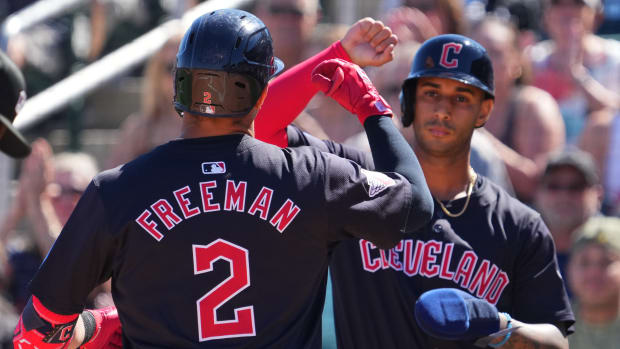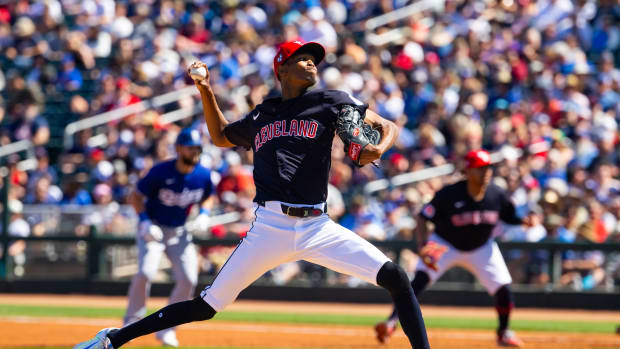A 60-Game Season Only Makes a Francisco Lindor Trade Less Appealing for the Indians
If you’ve followed me here at Cleveland Baseball Insider, you know the topic of Francisco Lindor is one I’ve gone back and forth on over the past couple months.
I’ve noted that Lindor’s decision to cut off contract extension talks could make the Cleveland Indians further regret not moving him last winter.
That, if the Indians were thinking about trading him this year, it was a decision they needed to figure out before this season began.
That, heck, the Indians might be best served to just trade him as soon as possible.
Basically, while baseball has spent the past few months in a state of uncertainty, there remains no shortage of Lindor-related talking points.
Now, we finally know what the 2020 campaign -- i.e. Lindor’s second-to-last year of team control -- will look like. Provided the nationwide pandemic doesn’t derail MLB’s plans, we have 60 games of baseball on the docket this summer.
With this much-needed clarity provided, what should Cleveland do with its marquee shortstop? Is it now time to explore moving Lindor? Should the team just table trade talks until this winter?
If you ask me, the answer is “no.”
For both questions.
MLB rosters are set to unfreeze this Friday at noon, and despite the trade winds constantly surrounding Lindor, I believe the Indians should hold off on dealing him this year, or at any point before his contract expires.
This admittedly goes in contrast with how I initially thought Cleveland needed to handle this situation. Losing Lindor for nothing is an outcome I’ve often claimed the Indians had to avoid at all costs.
However, the situation has been constantly evolving, so much so that the idea of trading him no longer makes the most sense.
For starters, the 60-game season has significantly weakened the appeal of moving Lindor this summer.
The returns would obviously be better than anything the Tribe could get come winter. Still, the extra rental time teams would be paying for is much lower than it’d be under normal circumstances, or even under an 82-game campaign. That’s especially true if the Indians hold off on trade talks until they get closer to the August 31 deadline.
It’s not a leap to think this may make interested clubs hesitant to go over the top with their respective offers.
Essentially, if the Indians are indeed eager to get as much as they can for Lindor, they’d have to move him soon after rosters unfreeze. Before making that call, one important question needs to be answered.
Can Cleveland trade Lindor this season and still contend?
Is the rotation strong enough to endure the drop in run support which would come from Lindor’s departure?
Would players like José Ramírez, Carlos Santana and Franmil Reyes be prepared to pick up the offensive slack?
Could the Indians in general withstand both the loss of Lindor and the potential soft-tissue injuries which often hit players early in the year, ailments which will now carry more weight considering how abbreviated the season has become?
Perhaps they could convince themselves to answer these questions with a resounding “yes,” but it’s not a bet I’d make with confidence.
From there, the focus shifts to this coming winter, where the value in potential trade proposals only decreases further.
Sure, there’s always the chance a team overpays, driven by the desire to get the inside track on Lindor’s free agency. That said, for one year of guaranteed team control, any offer will still be weaker than what was seen this past offseason.
With that in mind, is it even still worth it for Cleveland to trade Lindor?
Obviously, getting anything in exchange for his departure is preferred. Still, by that point in the game, any regret the Indians would feel from losing Lindor for nothing simply won’t be as big as it once was.
Frankly, it’s not very big right now, either.
Teams are angling for, max, 222 regular season games with Lindor. This likely decreases the probability of Cleveland receiving an offer it just can’t refuse. That’s especially so considering the threat of a season shut down will be ever present this summer, making the actual length of a Lindor rental inconclusive.
Personally, it just seems as though the Indians receiving clarity on the 2020 season only decreased the appeal of trading their star shortstop.
With that in mind, Cleveland might as well approach its Lindor conundrum the same way owner Paul Dolan suggested before last season.
Just enjoy him, then see what happens.
Ironic as it may seem, what was once a statement which elicited nothing but fan animosity now might be the most sensible route for the Indians to take.




